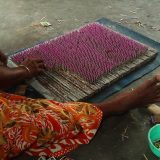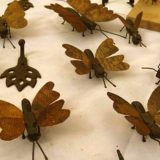Homegrown….
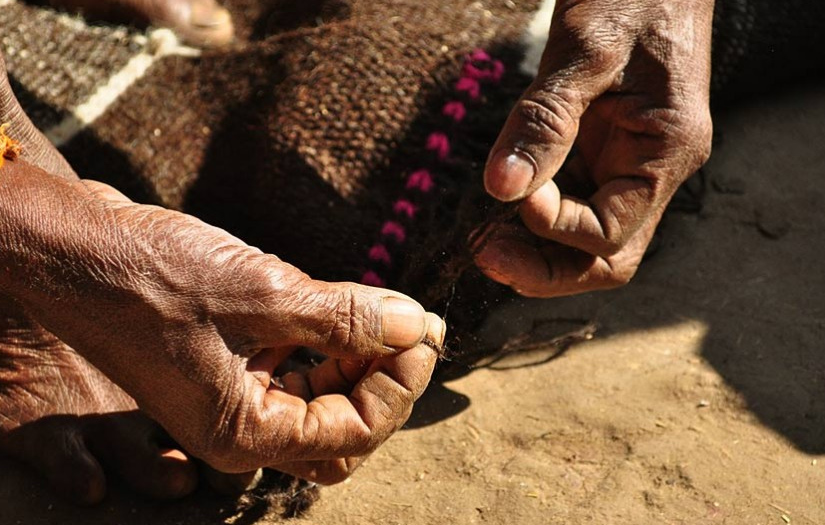
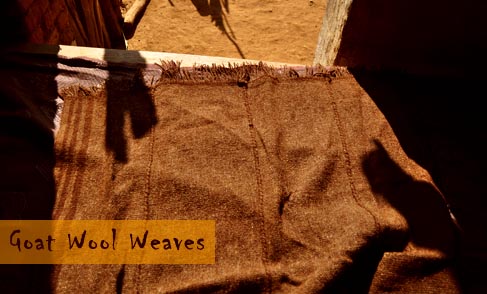
Among the north eastern forests of Madhya Pradesh, lies Bandhavgarh National Park, home to fierce tigers and leopards. Where tiger footprints are seen along dusty jeep tracks, there lives a small community of goat herders, the Gadaris. They rear goats and cows and grow most of their own food in the surrounding land. They drink an intoxicating concoction from the Mahua flower and worship Baghisura, the Tiger god.

A walk around the village Kutuliya, one can see chilies, corn or vadis laid out in the courtyards or roofs of houses for drying in the sun. And every house has a log of sal wood standing in the courtyard, for a ritualistic significance so old, that not many remember it.
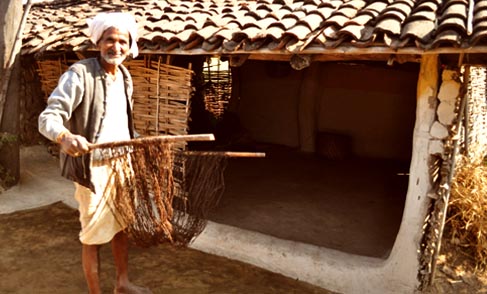
In this small village of about fifteen families, lives a craftsman, Daddi Gadari Pal who, over 70 years of age now, turns goat hair into useful objects like mats and blankets. Taking care of the entire village’s and surrounding villages’ puja mat requirements, he is one of the last weavers in the community, for successive generations have not taken to this craft.
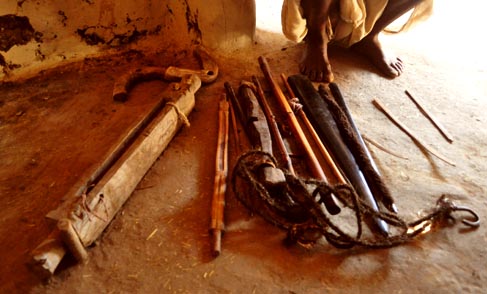
The craftsman shears wool from the goats and spins the fibres into yarns using a simple charkha, known as “Rahat”. The yarns are then cleaned with a coarse brush, called “koonj” to decrease their roughness. The loom, called “Sancha”, is an interesting assembly of fifteen different parts, which are combined and made into a loom when required and taken apart and kept away otherwise. This primitive yet clever design has the limitation of width and therefore, narrow pieces of woolen yarn that are woven have to be sewn together for larger objects.
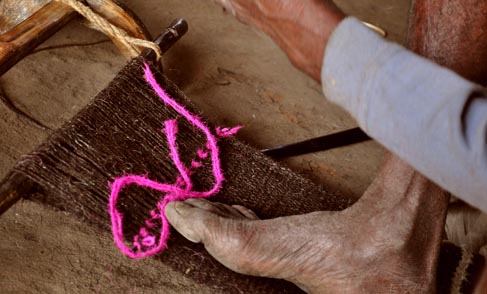
By dyeing only a small quantity of the wool in bright colours, a striking contrast is achieved against the natural colours of the goat hair; white, beige and dark brown. It takes the craftsman one day to weave a puja mat and about eight days for a double blanket, which is made by stitching together small woven parts. The thick yarns and close weave make a strong material that lasts long.
Using merely his hands and fingers for measurement and household tools like nutcracker instead of fabric scissors for cutting, the craftsman weaves a perfect rectangular piece in colour harmonies.
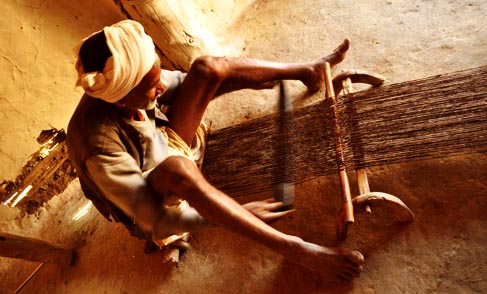
This goat wool weave is one of the many things that give this village an almost self sustaining economy. A small supply, small demand and sometimes a barter system has ensured that the village is somewhat shielded from outer-world influence. Although this is changing now, yet it is such indigenous crafts that continue to give communities a sense of identity and independence.

